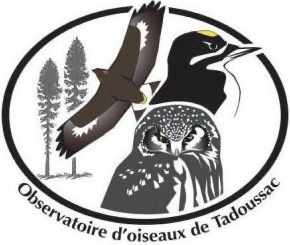While unfavorable weather conditions plagued the eastern part of the province for over a week (around mid-May), blocking the arrival of birds, south-western Quebec was experiencing an exceptional abundance and diversity of birds at the same time. Instead of being in the United States, as is often the case in May, the blocking line was in the Montreal region, much to the delight of local observers and the McGill Bird Observatory team, who enjoyed a multitude of incredible days.

We had to wait until the last 7 days of May to finally be treated to interesting arrivals of neotropical passerines (warblers, vireos, flycatchers, etc.) on the North Shore. It was at this time that we had the chance to witness beautiful migratory corrections (or reverse migrations) at the Tadoussac dunes, including 2 passages of more than 20,000 birds along the dunes at low altitude. Several ornithologists from Quebec, the United States and elsewhere in Canada were then able to witness these spectacular diurnal migrations, which have now made the site famous!
It was during one of the first significant movements that André Desrochers, professor at Laval University and member of the TBO scientific committee, as well as other ornithologists from our team, noted that birds of the same species seem to hold together as they parade along the dune. In other words, it appears that when an individual of a species passes, the chances are relatively high that the next individual to pass will be of the same species. But is it just an appearance? One way to determine this is to approach the problem statistically.

André Desrochers then suggests establishing the exact list of each bird observed during these passages. The birds will be recorded directly on a cell phone, which will allow the exact moment of the observation to be noted. The team, initially made up of André Desrochers and Laetitia Desbordes, will finally be able to carry out this test over 4 mornings. On the first morning, it was possible to establish a sequence of 1007 birds belonging to 29 species. 333 times, the next bird was the same species as the previous one. Is it high compared to what you would get by chance? The way to determine this is precisely to create a situation of chance – easy, just shuffle the order of the 1007 birds, a bit like shuffling a deck of cards, count the sequences of the same species, and repeat a large number of times.
After 10,000 times, which takes about 6 seconds on the computer, we found that the average number of sequences of the same species, assuming they “don’t care about each other”, was 133 , therefore much weaker! None of the 10,000 simulations gave a result as high as the 333 obtained. The same phenomenon repeated itself during the 4 mornings when we measured it (see graphs below). So, yes, birds of the same species hung together, at least these 4 mornings! This phenomenon of conspecific attraction among migrating passerines has been little documented until now. The literature on this subject is quite thin and migratory corrections constitute a great opportunity to document everything in a more significant way!

